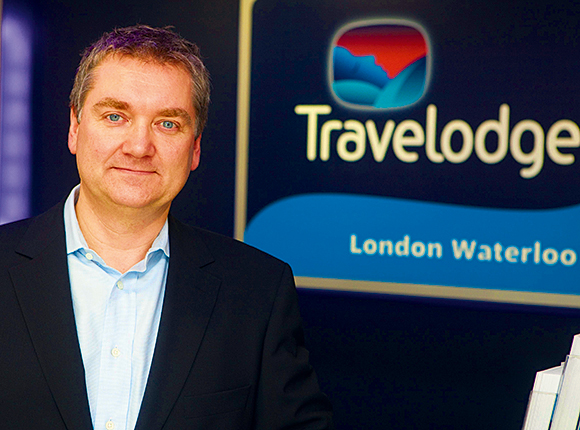There's a great video interview in BigHospitality with Chief Executive Grant Hearn about how Travelodge plans to put some turbulent times behind them following a recent debt restructure. You can read the article and view the video in full by clicking here.
I appreciate it's a business focused interview aimed at the hospitality sector, but here are my three main observations on that particular interview:
Of course, Mr. Hearn did say all those things. But, to paraphrase the old Morecambe & Wise gag, not necessarily in the right order. I guess he forgot to take off his CEO Strategy hat and put on his Brand PR hat for a few minutes.
Within the boardroom, it is perfectly acceptable to talk about product, offer, ROI, strategy and even Premier Inn. In public however, surely the soundbites should be about customer innovation, service excellence, the brand experience and team spirit. Travelodge staff deserve to hear it from leadership, their competitors should start to fear it and most importantly their customers really need to believe it.
As it happens The Telegraph made a much better job of selling the virtues of that new room design with those impressive king-sized beds. I urge you to read it here to get the full picture of Travelodge's business roadmap ahead. It does sound exciting.
I wish Grant Hearn and all the team at Travelodge every success in rolling out this new phase. The financial restructure was a risky piece of business that seems to have been pulled off successfully. This should give the group a sure footing during these continued turbulent months and years ahead.
 |
| Travelodge CEO Grant Hearn has king-size plans for the chain |
I appreciate it's a business focused interview aimed at the hospitality sector, but here are my three main observations on that particular interview:
- Mr. Hearn mentions Premier Inn within
the first minute22 seconds of beginning his interview and goes on to discuss the focus that exists on that rivalry.
There is a focus on that rivalry, but I suspect none more so than in his own Boardroom. And that's fine behind closed doors, but publicly you have to wonder why is the Travelodge CEO giving so much oxygen to his rival's brand? As a potential customer, I am reading an article about Travelodge, given by the Travelodge CEO and guess what? Premier Inn gets a mention even in the headline. That's gotta hurt.
- He goes on to state that Food and Drink sales are not central to the business plan as they represent "only about £30m" in revenues out of £400m in total. In a nutshell he says; "What's important about food and drink to me is actually... selling rooms."
Again, as a potential customer, it leaves me wondering how good the food offer actually is if it doesn't appear a priority for the top man in the job? Or to look at it another way, is that kind of statement going to motivate all those bartenders, service staff and chefs on payroll now required to raise their game if Travelodge are to compete with 'those other guys'?
- There was mention of a new bedroom design. I had to play it a couple of times to catch it, but there it was in the last line of the article and referred to just once by Grant in the video interview itself.
This may simply have been down to editing, but what a missed opportunity for the CEO (the main brand ambassador of the company) to talk more about these exciting new changes within Travelodge and how they will benefit future customers. He could have then clearly articulated the company's renewed focus on great food, drinks and service from the fantastic people working within the group.
Of course, Mr. Hearn did say all those things. But, to paraphrase the old Morecambe & Wise gag, not necessarily in the right order. I guess he forgot to take off his CEO Strategy hat and put on his Brand PR hat for a few minutes.
Within the boardroom, it is perfectly acceptable to talk about product, offer, ROI, strategy and even Premier Inn. In public however, surely the soundbites should be about customer innovation, service excellence, the brand experience and team spirit. Travelodge staff deserve to hear it from leadership, their competitors should start to fear it and most importantly their customers really need to believe it.
 |
| Getting out of the Boardroom to focus on bedrooms. |
As it happens The Telegraph made a much better job of selling the virtues of that new room design with those impressive king-sized beds. I urge you to read it here to get the full picture of Travelodge's business roadmap ahead. It does sound exciting.
I wish Grant Hearn and all the team at Travelodge every success in rolling out this new phase. The financial restructure was a risky piece of business that seems to have been pulled off successfully. This should give the group a sure footing during these continued turbulent months and years ahead.

















